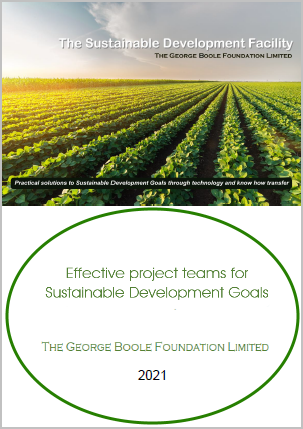Beneficiary information
A document providing an explanation of the creation of SDGToolkit and the benefits for beneficiaries (project teams) can be accessed by clicking on the image below. |
A brief providing the constraints on multiple beneficiary initiatives can be accessed by clicking on the image below. |
Beneficiaries are those organizations and project teams for whom the SDF intends to support through a free provision of extension support within the integrated development framework of the SDGToolkit.
Typical beneficiaries include project teams, extension services, executing agencies, research institutions, rural community action groups, cooperatives and non-governmental service organizations specializing in food, fibre and feedstock projects.
Beneficiaries will acquire expert training in advanced project design due diligence procedures and receive instructions on when and how to use analytical tools to identify and manage critical information to establish evidence to identify project design options.
This system enables teams to analyse relevant information on gaps and needs at the national level as well as identify and quantify the principle constraints facing project implementation. The training takes beneficiary personnel through a range of factors of relevance to the identification of sustainable solutions that take into account real incomes impacts as well as carbon footprint analysis so as to identify optimized projects that can deliver:
- a viable financial return
- reduced income disparity
- reduce carbon footprint
- carrying capacity balance
- and quantified impact analysis on specific environmental and ecosystem issues identified as being critical
|
The database system acts as a Project Memory so that loss of team personnel does not disrupt ongoing work because newcomers can be brought up to speed in the short period of time. An onboard internal evaluation system enables teams members to assess project performance and in cases of delays in completion of tasks arising from changed conditions the options simulations can be used to orientate decisions made. The evaluation system can also be used to record the effectiveness of decisions.
The OQSI evaluation criteria help project teams apply them according to project phases and tasks where the evaluations differ from one another by covering the performance or quality of:
- Design
- Setup
- Operations (completion of tasks)
- Operational decisions and outcomes
- Post-funding design adjustment for long term sustainability

 |



